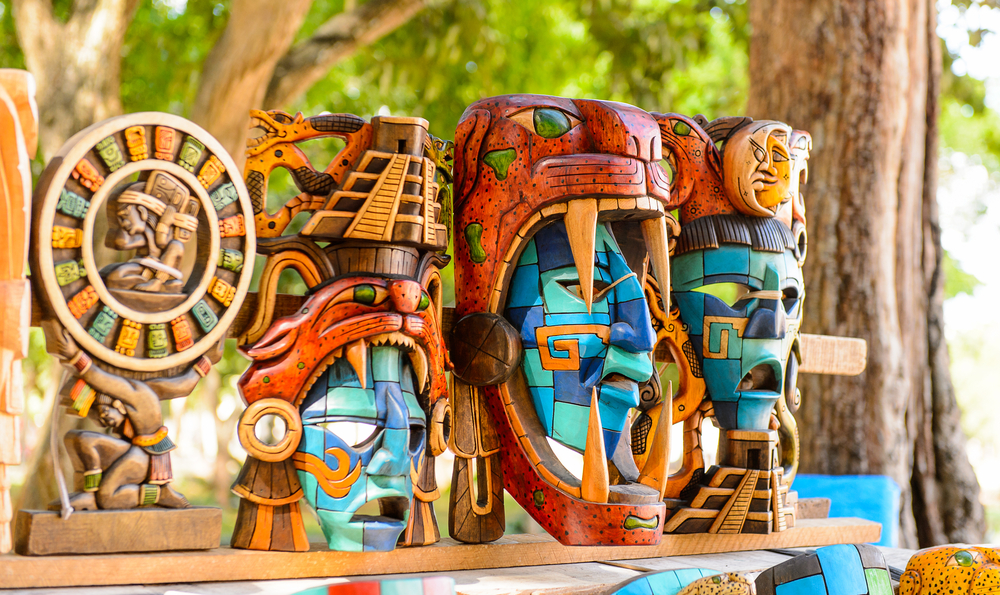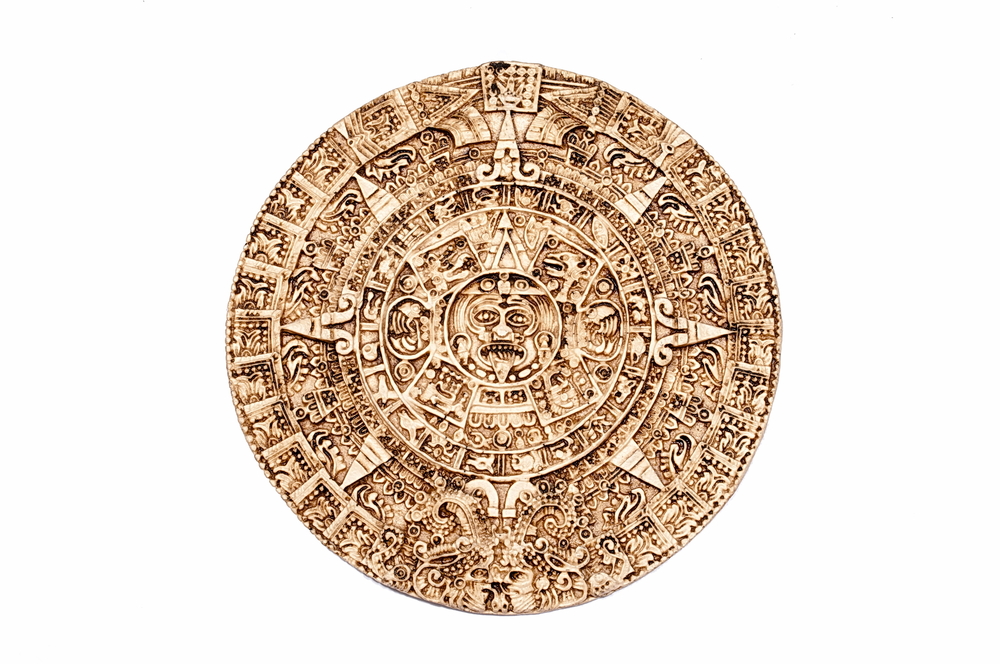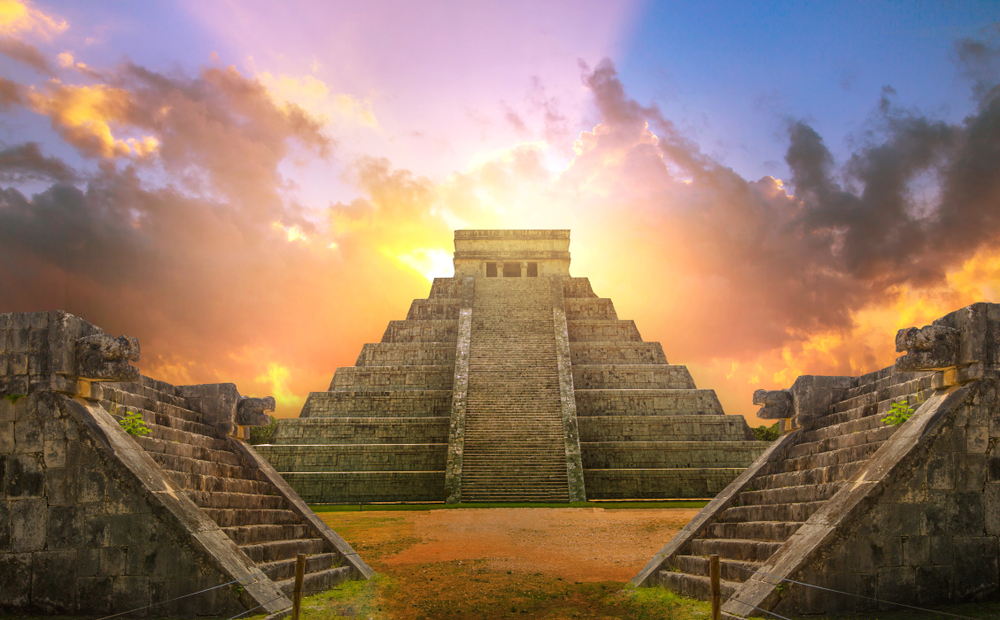The ancient Mayans were a vibrant civilisation that once thrived in what is now Mexico, Guatemala, Belize, and parts of Honduras and El Salvador. They were known for their many achievements in various fields, such as astronomy, mathematics, architecture, and, most notably, their unique religious practices and beliefs.
This blog post uncovers the secrets of the Mayan civilisation, their gods, and the intriguing system of hieroglyphs they used to record their history and culture.
Jump to:
The Mayan Civilisation

The Mayan civilisation was a mosaic of diverse city-states and communities, each with its own ruler and governing system. Yet, all shared a cohesive cultural and religious backbone. Unlike the singular, empire-driven narrative of some ancient civilisations, the Mayans flourished through interconnected city-states, each contributing to the civilisation's collective knowledge and spirituality.
Mayan Society and Leadership
The structure of Mayan society was intricately hierarchical, with a king or ‘K’uhul Ajaw’ (holy lord) at the top, followed by a class of nobles, priests, and then the common people, including farmers, artisans, and traders. The king was both a political leader and a religious figure, believed to communicate directly with the gods and ancestors. This dual role underscored the Mayans' deep integration of religion into their governance and daily life.
A Flourishing Trade Network
Trade was the lifeblood of the Mayan economy, connecting various Mayan cities and with distant civilisations. The Mayans traded goods such as jade, cacao, textiles, and precious metals, and developed an extensive trade network that extended far beyond their borders. This enriched their economy and facilitated cultural exchange and the spread of technological innovations.
Mayan Religion and Beliefs
Mayan religion was a rich tapestry woven from myths, rituals, and the vibrant worship of a pantheon of gods. Central to their belief system was the idea that the cosmos was a complex, interconnected entity, with every element playing a crucial role in maintaining the balance of the universe.
The Cosmos: A Living, Breathing Entity
To the Mayans, the universe was alive, pulsating with energy and inhabited by gods and spirits influencing every aspect of life. This cosmology was underpinned by the belief in a multi-layered universe, comprising the earthly realm, the underworld, and the skies above. Each layer was home to specific deities and spirits, with the Mayans navigating these realms through rituals, prayer, and observance of cosmic cycles.
The Mayan Gods and Goddesses
The Mayans worshipped various deities, each governing aspects of nature, human activities, and cosmic events. Among the most revered was Chac, the rain god, vital to their agriculture-dependent culture. Other significant deities included the Maize God, symbolising fertility and renewal, and Ix Chel, the goddess of childbirth and medicine.
It wasn’t just the major gods that were important; numerous lesser deities played roles in daily Mayan life, overseeing everything from the home hearth to the jungle’s depths. This vast array of divine figures illustrates the Mayans' attempt to understand and harmonise with the forces of nature and the universe.
Rituals and Ceremonies
Rituals and ceremonies were a big part of Mayan religion, bridging the divine and the mundane. Through elaborate rituals, which often included offerings, dance, and even human sacrifice, the Mayans sought to appease their gods, ensuring harmony and prosperity for their communities.
Dance, Music, and Festivals
Dance and music were integral to Mayan rituals, used to express reverence, tell stories, and invoke the presence of the gods. Festivals often accompanied these performances, drawing communities together in shared celebration and worship. These events were opportunities for social cohesion, reinforcing the bonds between people, their communities, and the gods they worshipped.
Mayan Calendar and Astronomy

The fascination with the skies is a trait shared by many ancient civilisations, but the Mayans elevated this curiosity to remarkable heights, integrating it into their very way of life. Their expertise in astronomy was an important part of their culture, religion, and societal organisation. The celestial movements dictated the flow of their existence, from the mundane to the divine.
A Calendar Like No Other
The sophistication of the Mayan calendar is a marvel of ancient engineering and astronomical observation. Far from being a simple timekeeping tool, it was a complex system that intertwined lunar, solar, and planetary cycles with the rhythm of human life and the whims of the gods. This calendar was a harmonious blend of science and spirituality, guiding farming, festivals, and fortune-telling.
The core of this system was the dual calendar: the Haab', a solar calendar of 365 days divided into 18 months of 20 days each, with an additional short month of 5 days at the end, known as Wayeb' to complete the cycle. Simultaneously, the Tzolk'in, a 260-day ritual calendar, functioned alongside the Haab'. The Tzolk'in consisted of 13 cycles of 20 days, each named after a different god and imbued with specific spiritual significance.
Mapping the Cosmos
The Mayans' understanding of astronomy was astonishingly advanced. They could predict solar and lunar eclipses, understand the Venus cycle, and could chart the movements of other visible planets with astounding accuracy. Their observatories, such as the one at Chichen Itza, were meticulously designed to align with celestial events, allowing priests and astronomers to observe the heavens precisely.
Numbers and the Divine
Mayan numerology was deeply entwined with their cosmology and religion. Numbers were sacred, carrying meanings that went beyond their mathematical value. They were used to calculate the optimal times for planting and harvesting, for conducting rituals, and for making important decisions within the community.
The Long Count, part of the Mayan calendar system, tracked longer chronological periods, enabling the Mayans to place events in a vast cosmic timeline. This allowed them to predict events far into the future, demonstrating a deep commitment to understanding time's cyclical nature and humanity's place within it.
Mayan Art and Architecture

The art and architecture of the ancient Mayans are dazzling expressions of a civilisation deeply entwined with the divine, the natural world, and the cosmos. Their creations had deep symbolic meaning and purpose, bridging the earthly and the celestial.
Architectural Marvels: Temples to the Heavens
The Mayans' architectural feats are among the most striking aspects of their legacy. Each structure, from towering pyramids to expansive palaces, was designed to align with celestial events, such as solstices and equinoxes, highlighting the Mayans' intricate knowledge of astronomy and its significance in their cultural and religious life.
The Temple of Kukulkan, also known as El Castillo, at Chichen Itza, exemplifies this blend of precision engineering and astronomical alignment. During the spring and autumn equinoxes, the play of sunlight and shadow creates the illusion of a serpent slithering down the pyramid's steps, symbolising Kukulkan, the feathered serpent god.
Expressive Artistry: Telling Stories Through Symbols
Mayan art was a language of symbols, a means to convey the stories, beliefs, and values of their society. Sculptures, pottery, and murals were narrative tools that depicted the deeds of gods and rulers, mythological tales, and scenes from daily life with rich symbolic significance.
This artistry extended to personal adornments and objects used in rituals, each crafted to reflect the status of the wearer or the sacred purpose of the ceremony. The attention to detail and the depth of symbolic meaning in these works speak to the Mayans' belief in the interconnectedness of all aspects of existence — from the individual to the universe.
Written in Stone: The Language of Mayan Hieroglyphs
The Mayans developed one of the most advanced writing systems in the pre-Columbian Americas, a complex script of logograms and syllabic glyphs that allowed them to record their history, achievements, religious texts and astronomical observations. These hieroglyphs, carved into stone or written on paper made from bark, are crucial keys to understanding Mayan culture, beliefs, and scientific knowledge.
The deciphering of these texts has revealed the depth of Mayan intellectual and spiritual life, offering insights into their ceremonies, the reigns of their rulers, and their celestial calculations. The script itself is a form of art, with each glyph a miniature masterpiece of design, blending aesthetic beauty with linguistic function.
The Mayan Legacy
Despite the decline of the Mayan civilisation in the post-classic period, their legacy continues to fascinate and inspire. The reasons behind their decline are multifaceted, involving environmental changes, warfare, and societal disruptions. Yet, the remnants of their culture, from the majestic ruins of their cities to the continued use of the Mayan language and traditions, continue to inspire and educate us today.
Recommended for you!
Best SellersDelve Deeper into Mayan Civilisations with Centre of Excellence
Discover the rich histories, cultures, and mysteries of the Mayan and Aztec peoples with our Maya and Aztec History Diploma Course, designed to offer comprehensive insights into these ancient civilisations.
Why Centre of Excellence?
- Accessibility for All: We firmly believe that education should be accessible to everyone. That’s why we strive to keep our courses affordable, ensuring anyone interested in learning can do so.
- Flexible Learning Experience: Our courses are crafted to fit into your life seamlessly, offering the freedom to learn at your own pace. This means you can enrich your knowledge and achieve your educational goals without compromising your daily commitments.
- Diverse and In-depth Curriculum: Our course content spans a wide range of topics, from the daily lives of the Mayans and Aztecs to their complex belief systems and the enigmas that shroud their history, catering to various interests and educational needs.
- Dedicated Support: When you enroll in a course at the Centre of Excellence, you gain access to a supportive community of tutors and fellow learners. This network ensures you have all the encouragement and assistance you need throughout your learning journey.
Special Offer
We are excited to present our Maya and Aztec History Diploma Course at a discounted rate of £29, saving you over £100!













